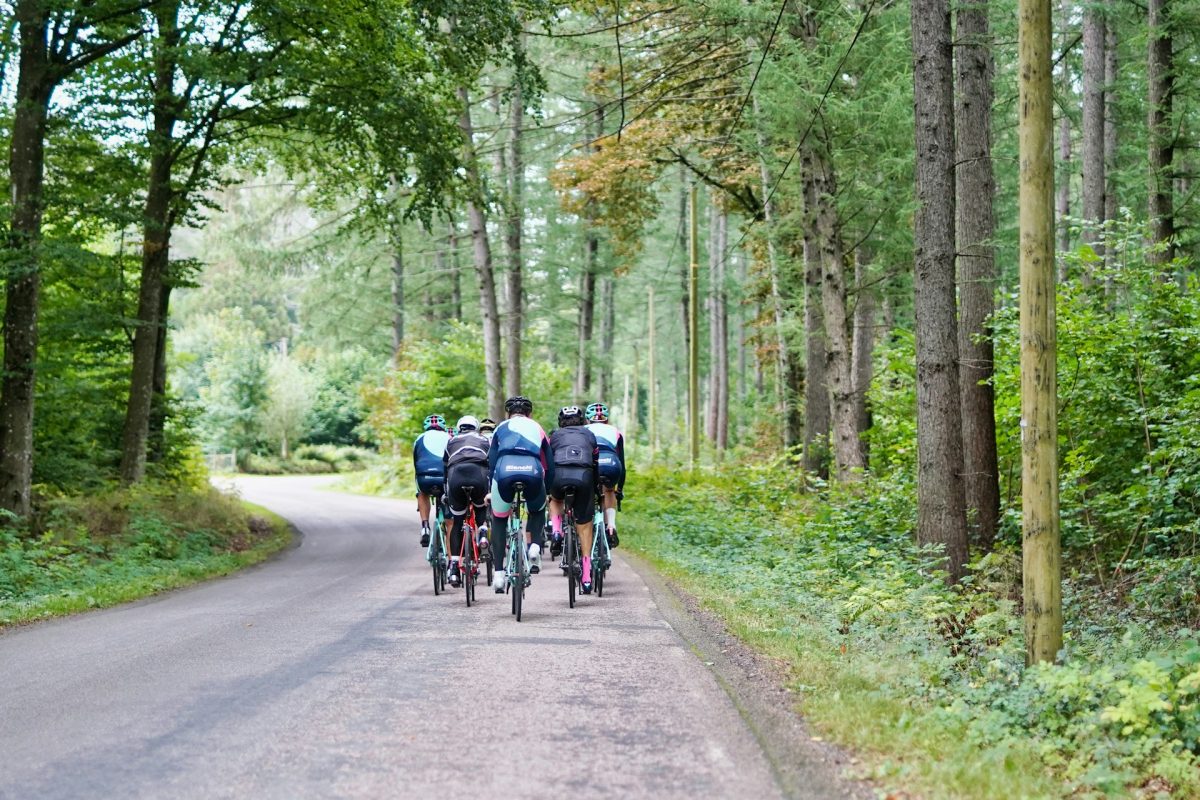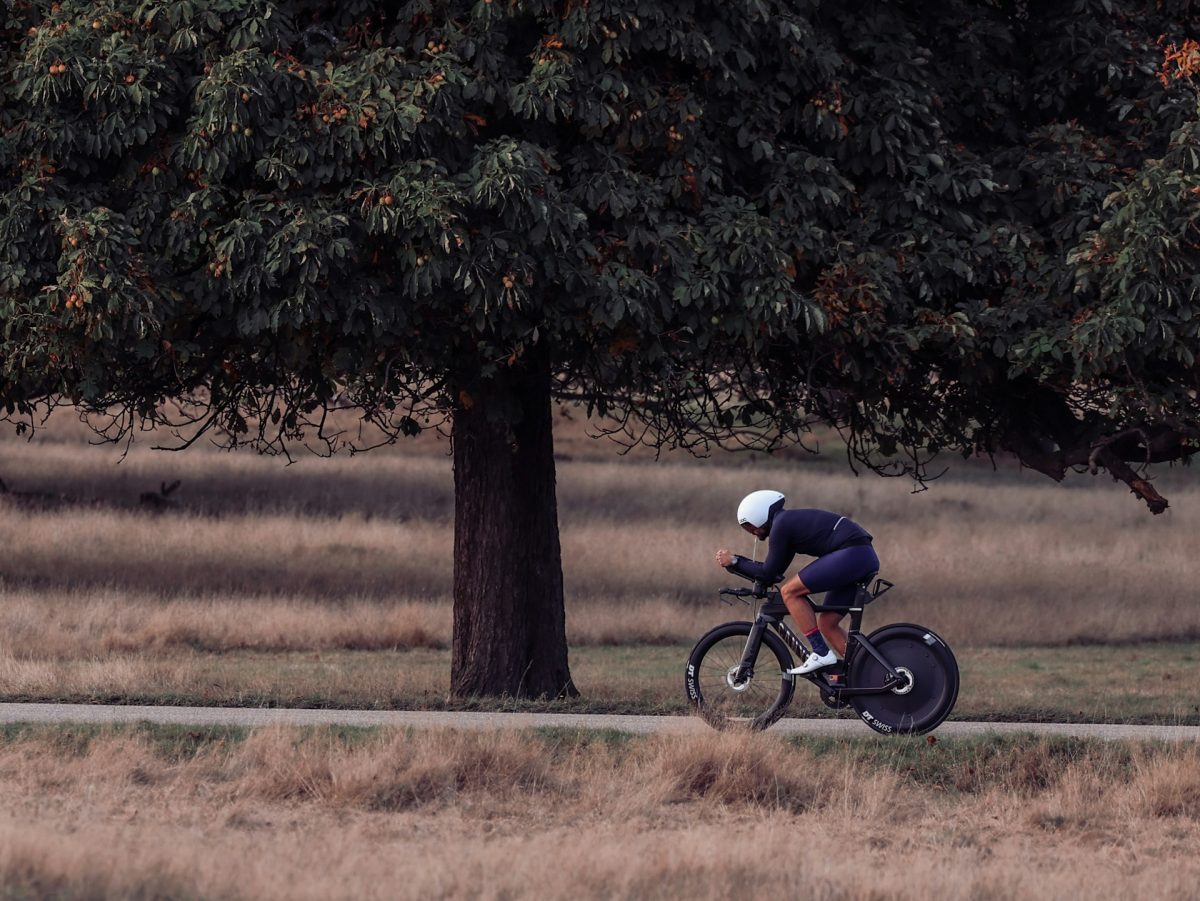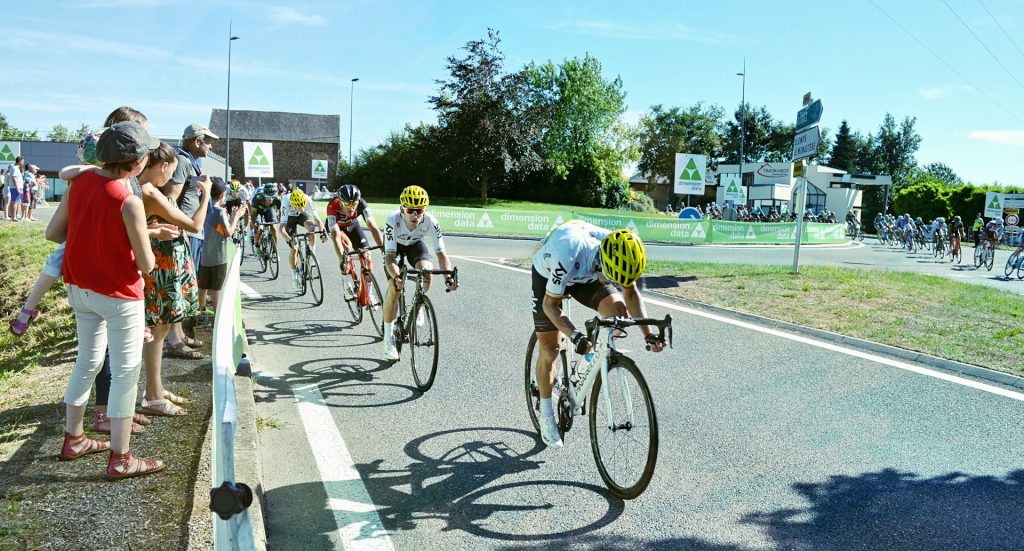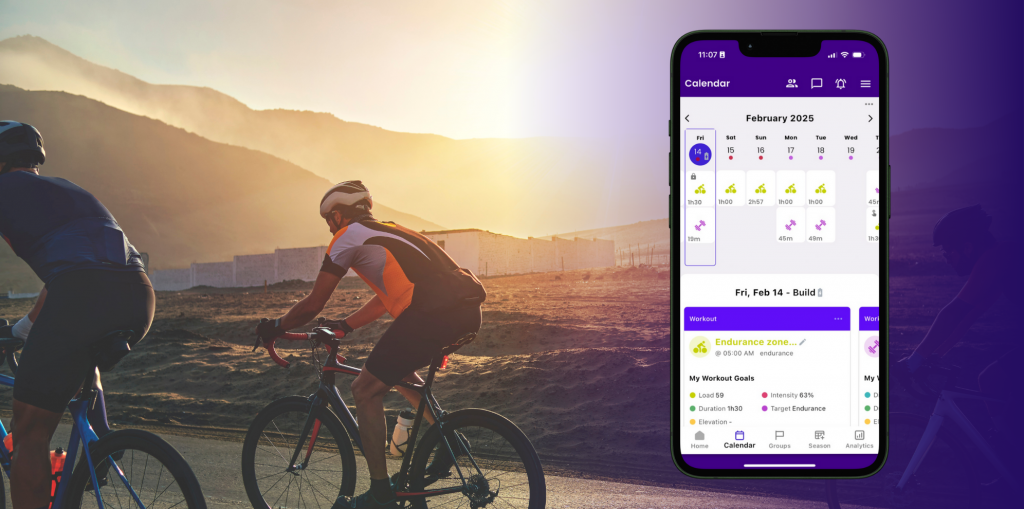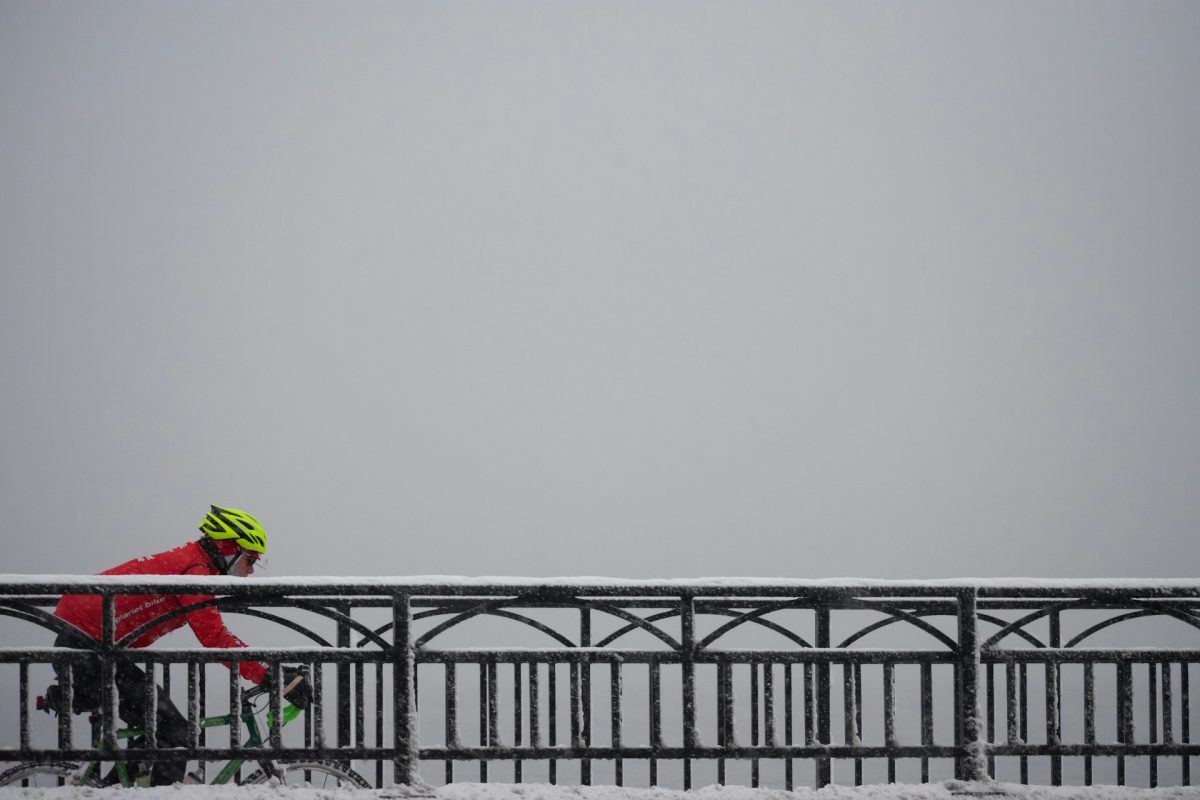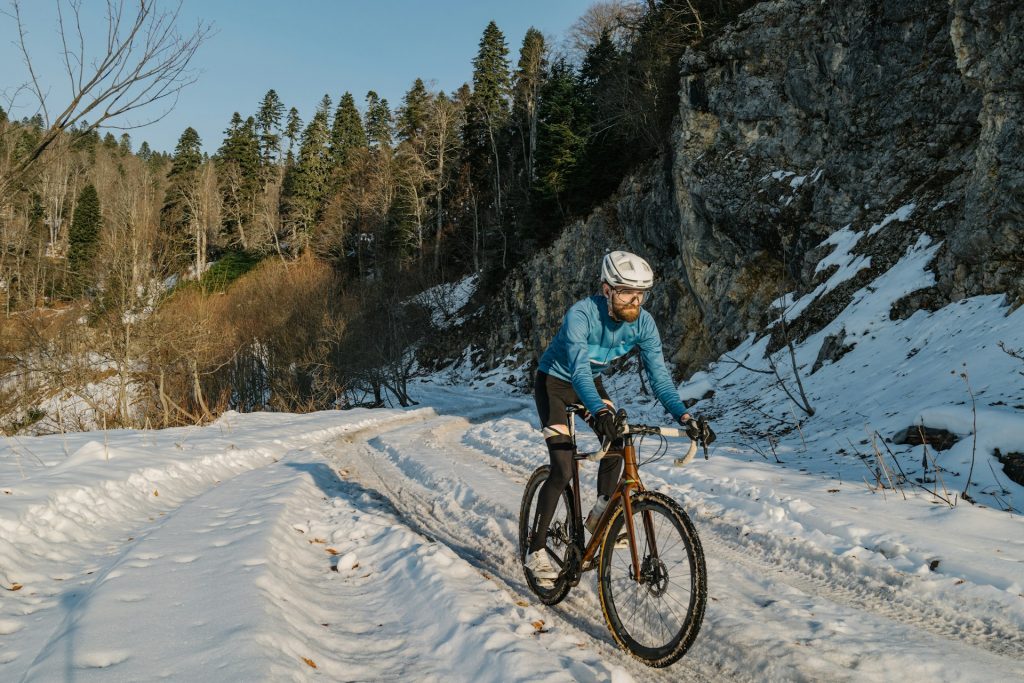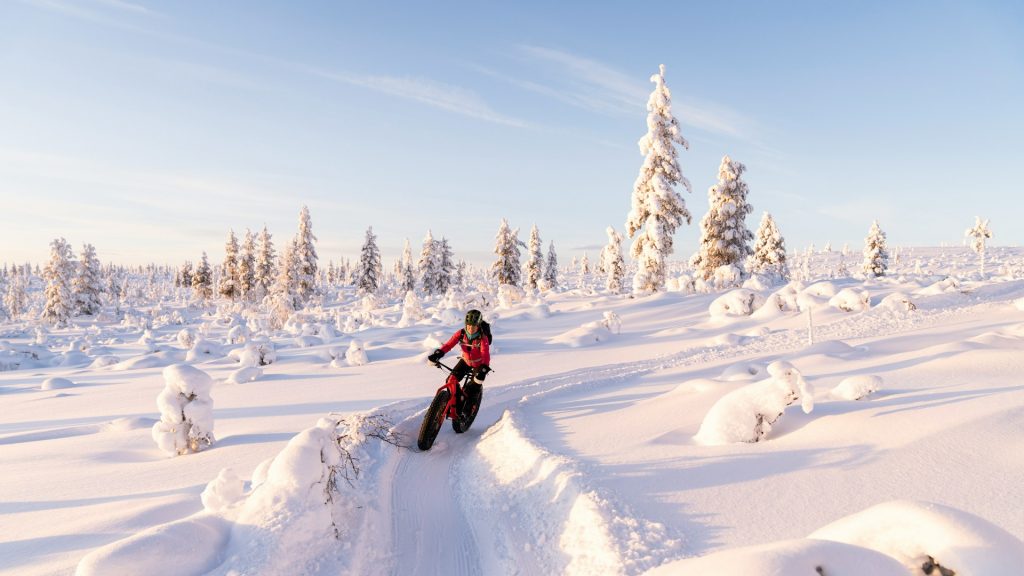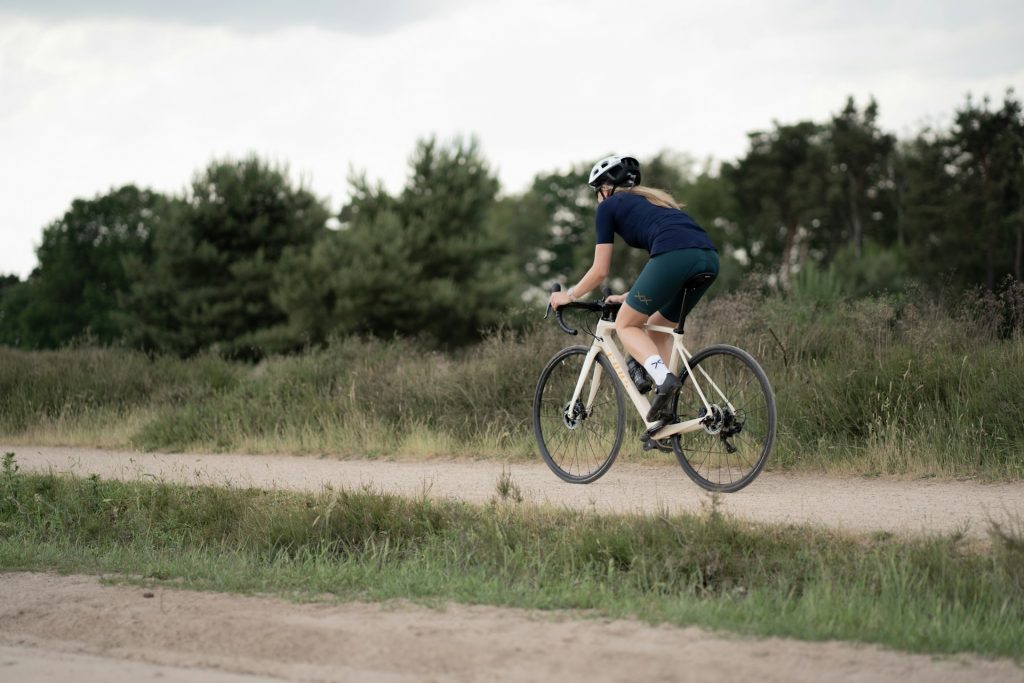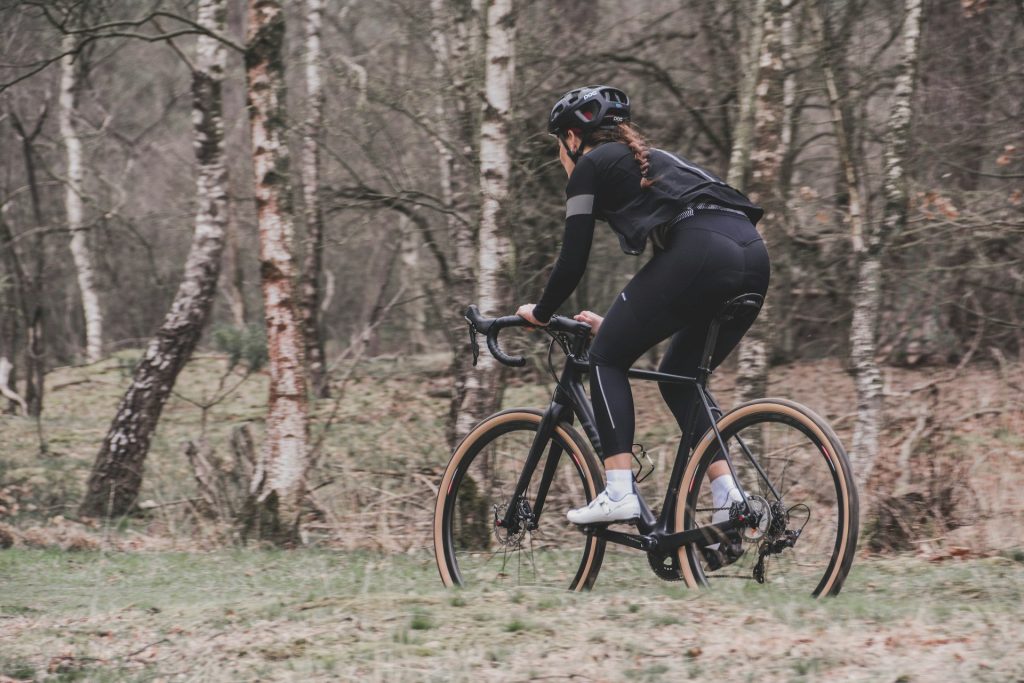From Trainer to Trail: Adapting Indoor Workouts for Outdoor Training
As the weather transitions and the promise of spring beckons, it’s time to dust off your Sunday bests and get ready to ride outdoors. While trainer sessions have allowed you to develop key components of fitness, adapting to the dynamic conditions of outdoor cycling requires some adjustments.
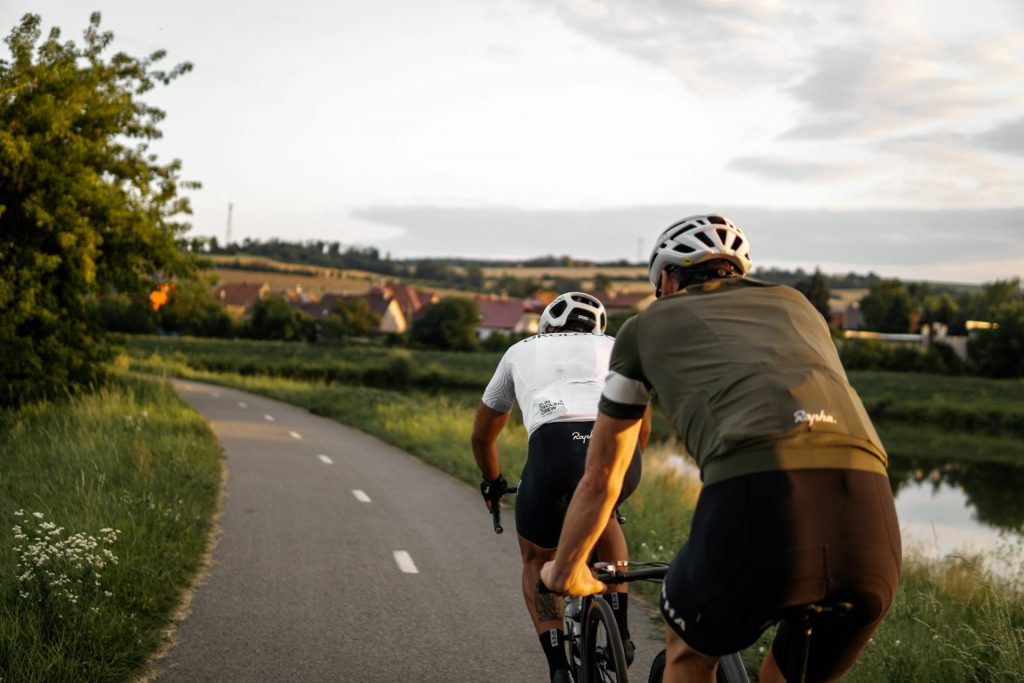
Understanding the Differences
Environmental Factors
For some climates, spring brings wind, rain, and fluctuating temperatures that can impact your ride. Unlike the controlled environment of indoor training, outdoor riding requires adaptability to changing conditions. Wind resistance can significantly alter your power output, making pacing more challenging. Rain can create slippery surfaces, requiring more caution in handling, braking, and cornering. Temperature swings might mean you need a dress change mid-ride.
Prepare for these factors by checking weather conditions before heading out. Plan your route with bailout options in case of worsening weather, and dress in layers to ensure you remain comfortable and safe.
Practicing riding in various conditions can improve your overall adaptability and confidence when faced with unexpected elements. Not to mention that you can’t control the weather on your target events.
Bike Handling & Terrain
Indoor training limits your exposure to real-world cycling skills such as cornering, descending, and adjusting for varying road conditions.
Spring is the perfect time to refresh these skills. Outdoor cycling requires the ability to react to obstacles such as potholes, gravel patches, traffic, and even wildlife. In contrast to the predictability of an indoor trainer, your reflexes must be sharp and your bike control precise.
If a skills clinic isn’t available via your local bike club, a great way to regain handling confidence is to practice slow-speed maneuvers in an open area before heading onto the roads – closed parking lots are ideal.
Working on balance, braking control, and navigating tight turns will ease the transition back to outdoor conditions. Riding on mixed terrain, whether rolling hills or technical descents, will also help remind you of correct shifting, gearing, and weight distribution for optimal efficiency.
The Right Data
Indoors, your power and effort can be consistent, but outdoors, wind resistance, terrain changes, and traffic influence effort distribution. Learning to pace yourself accordingly is key. For instance, maintaining a set power output indoors is straightforward, but outside, you may have to surge on climbs, ease up in a tailwind, or push harder against a headwind.
One way to train for this variability is to use lap averages on your recording device rather than the total average. For example, if you are maintaining power/heart rate/perceived exertion on the flats but have to go above this on a hill, simply hit the lap button once you can maintain the right measure again. This helps you focus on the correct time in zone rather than chasing an overall average.
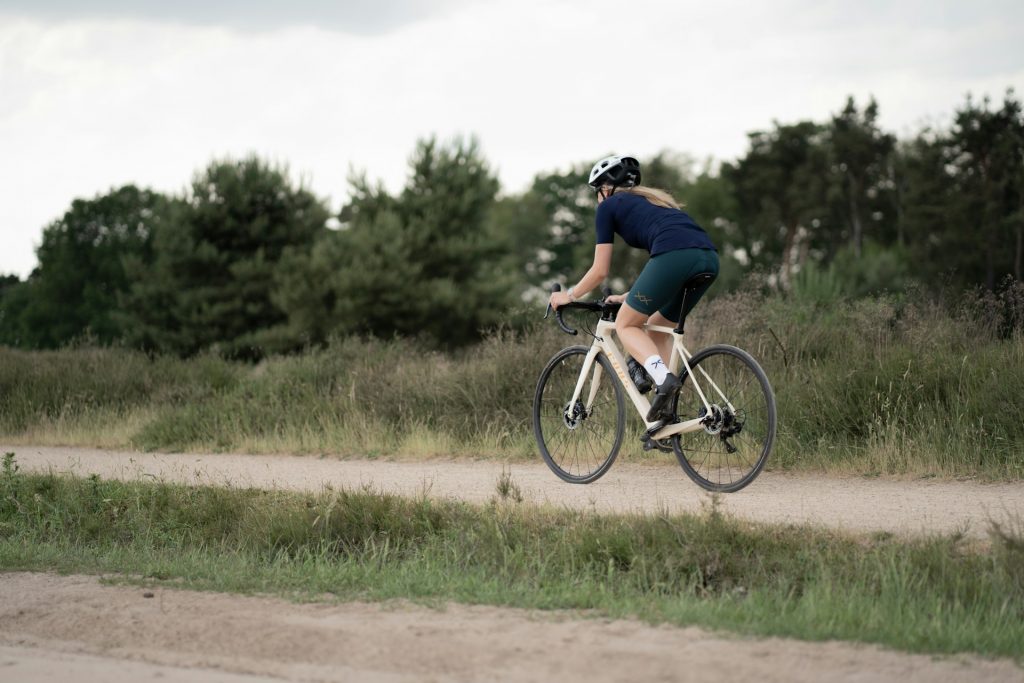
How to Adapt Your Indoor Workouts
A Gradual Transition
Start by replacing one or two indoor sessions per week with outdoor rides. This allows your body to adjust to changing conditions while maintaining consistency in training. Sudden shifts to all-outdoor riding can lead to fatigue or even injuries, as your body is no longer supported by the controlled resistance of an indoor trainer.
- Example: If you typically do VO2 max intervals indoors, find a steady climb or stretch of road to replicate these efforts. Uphill efforts are excellent for maintaining steady power output and simulating trainer-based efforts in real-world conditions.
- Example: Swap an indoor endurance ride for a steady, long outdoor ride to build real-world endurance. Keeping your power, heart rate, or perceived exertion in line with what was prescribed as best as possible and practicing sustained efforts over varied terrain will make your long rides more effective.
Mimic Structure Outdoors
To retain the benefits of structured training, plan outdoor rides that match the goal adaptation of indoor intervals. Use a power meter or heart rate monitor to stay within target zones and replicate your trainer’s precision outdoors.
- Threshold Intervals: Find a long, uninterrupted stretch of road or a moderate climb where you can sustain effort without frequent stops.
- Sprint Workouts: Use road signs or natural markers to time your sprints. This keeps the workout engaging and sharpens acceleration skills. A benefit of sprinting outdoors is that you can work on your sprint technique. Have someone record you sprinting so you can compare against professional sprinters’ videos.
- VO2Max Intervals: Shorter and steeper hills are perfect for VO2Max intervals. Find a hill where you can ride at the required output for the duration.
Refine Bike Handling Skills
Riding outside provides an opportunity to regain confidence in bike handling. Dedicate time to:
- Practicing cornering and descending to rebuild fluidity and efficiency. A traffic-free (or traffic light) environment can be key to this, so timing rides when most people aren’t driving is sometimes important.
- Riding in different positions (on the drops, out of the saddle, etc.) to improve comfort and aerodynamics. Try to make a mental note of all the times you break from the position, then aim to best this next ride.
- Navigating group rides to reintroduce drafting and pacing dynamics. This also gives you a much-needed social boost and a nice reminder of why you, almost certainly, started riding in the first place.
Riding with others is a great way to practice real-world skills. Group rides can help you get accustomed to pack dynamics and riding closely with others, which is essential for any draft legal event or goal.
Adjust for Weather
Unlike winter, where you might train indoors to avoid extreme cold, spring weather is unpredictable. Be prepared by:
- Dressing in layers to regulate body temperature and avoid overheating or chilling. Most jerseys are flexible enough to carry those layers if you need to take them off, but saddlebacks are also a good idea.
- Checking forecasts and wind conditions before heading out to avoid getting caught in sudden weather shifts. Plan routes where you head into the wind at the start, this means a tailwind on the way home when you might be more fatigued.
- Planning routes that allow for bail-out options in case of rain, strong headwinds, or dangerous conditions. Let a family member or buddy know you’re heading out and opt for phone trackers so they can rescue you if you get a mechanical issue.
Being adaptable and prepared will allow you to enjoy outdoor riding without compromising your training quality.
Revise Your Fueling & Hydration Strategies
With indoor, controlled workouts, your fueling and hydration strategy is easy to implement, but outdoor rides demand more attention to this. The increased exposure to wind and sun, combined with longer durations, means that neglecting fueling can lead to energy crashes (bonking) or dehydration.
- Practice consuming fluids and fuel at regular intervals to prepare for longer rides and races. Set up an alarm on your phone or recording device to go off at 15-minute intervals as a reminder.
- Experiment with different fueling and hydration strategies, such as different carb or sodium intake per hour, to find what works best for your body.
Incorporate Terrain-Specific Training
Spring is a great time to explore new routes and adapt to different terrains, especially if you have a goal event that has a high degree of needed skill, such as mountain biking or gravel.
- Climbing Practice: Find hilly routes to rebuild climbing strength and work on pacing strategies. Correct technique and position are important. Again, ask someone to record you climbing so you can compare it against tutorial videos online.
- Wind Management: Ride in various wind conditions to practice pacing, positioning, and drafting skills. Riding in heavy wind can be character-building, but opt for headwind in the first half of your ride.
- Gravel or Trail Rides: If your goals include off-road riding, spring is the ideal time to start working on bike handling over loose surfaces. Just be mindful that after heavy rain, the trails might be in worse condition than the roads.
Mental & Tactical Adaptation
While riding for hours indoors is as much a mental workout as it is physical, spring riding requires situational awareness. Focus on:
- Reading the road and anticipating gear changes to improve efficiency.
- Developing tactical awareness for group rides or events, such as when to push efforts or conserve energy.
- Mentally adjusting to longer, more variable rides after winter’s structured sessions.

Final Thoughts
Spring offers the perfect opportunity to take your winter fitness outdoors and reintroduce the joys of real-world cycling. By gradually transitioning, mimicking structured workouts, refining handling skills, and adjusting for weather conditions, you’ll ensure a seamless and effective shift from the trainer to the trail. Whether you’re preparing for an event, a sportive, or just eager to enjoy the fresh air, embracing the transition properly will set you up for a strong season ahead.
